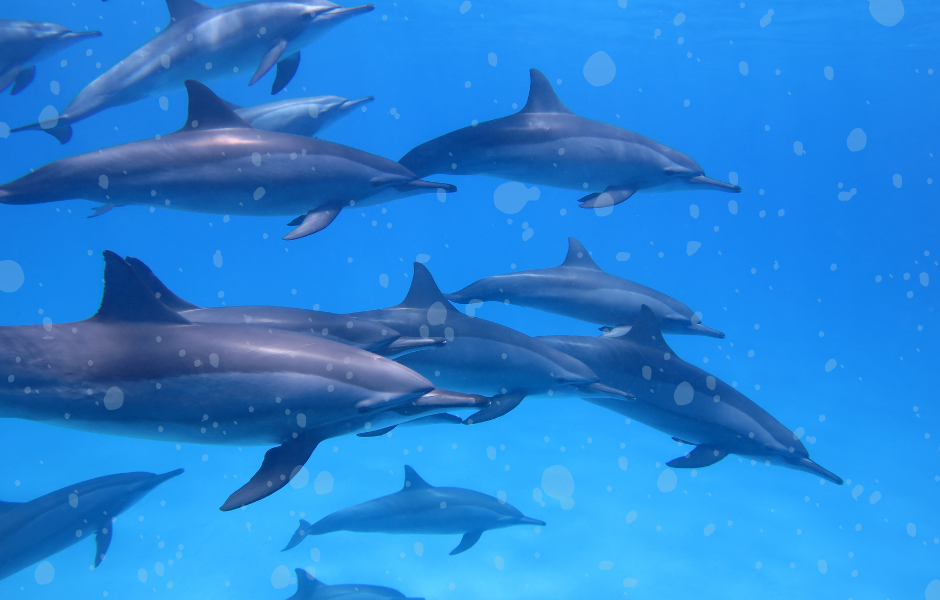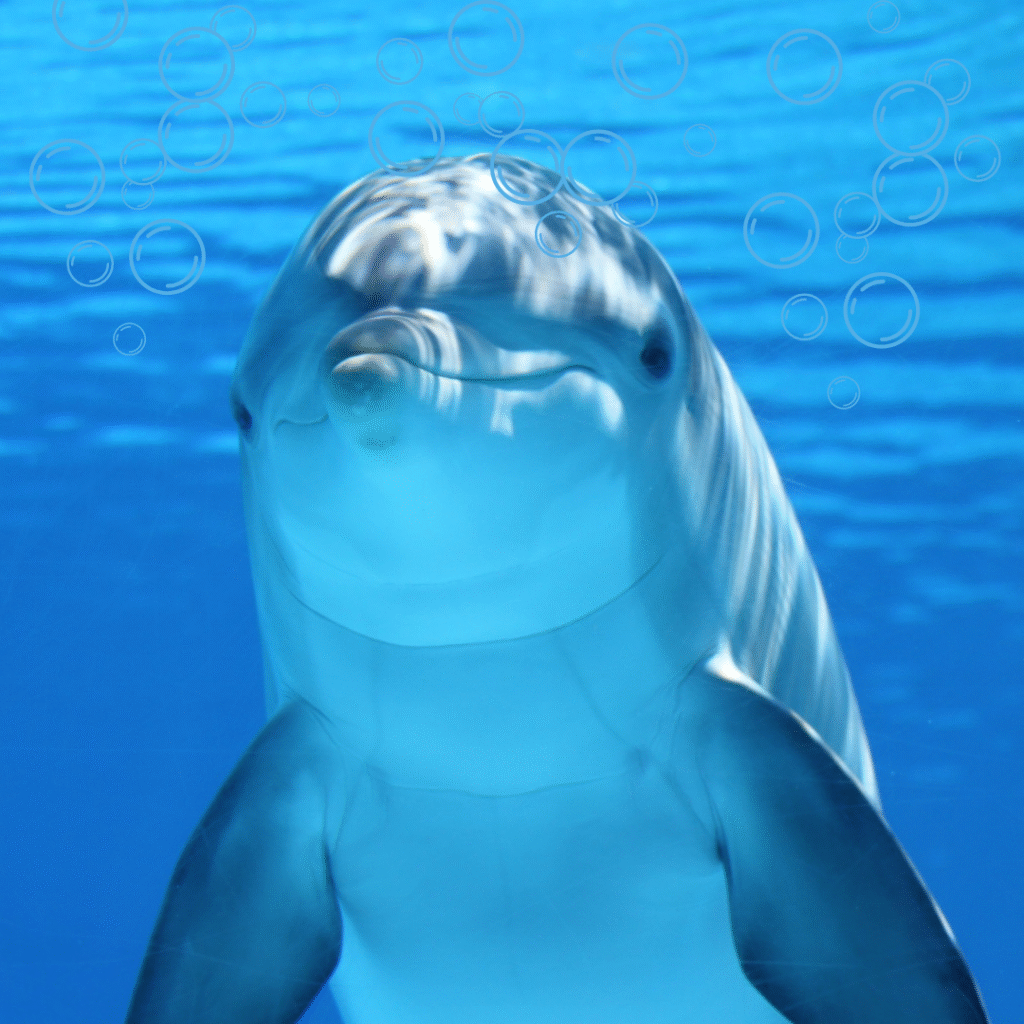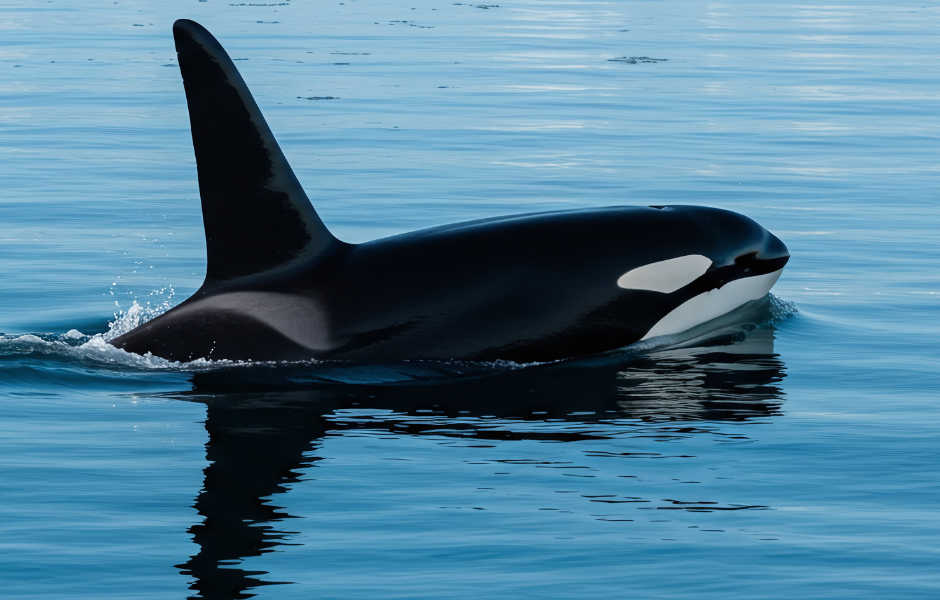
This article, Dolphins: the clever chatterboxes of the sea, has been written for native English speakers and learners of English as a second or foreign language. It helps children practise reading and comprehension, learn fun vocabulary, and discover amazing facts about dolphins. Written by Mark Pulley, a teacher and writer who creates fun and informative news articles for English learners.
Dolphins: smart, social, and full of surprises
Dolphins are more than just friendly faces in the sea. They’re incredibly intelligent animals that live in tight-knit groups, communicate in complex ways, and even have their own names.
Scientists are still discovering just how clever dolphins are, and the more we learn, the more fascinating they become.
How do dolphins talk?
Dolphins don’t speak like us, but they’re great communicators. They make clicking and whistling sounds to talk to each other. Each dolphin even has its own special whistle, a kind of name, that other dolphins recognise. Imagine shouting your best friend’s name underwater in the ocean. Do you think they could hear you?
They live in groups called pods, and they’re always chatting. Scientists believe dolphins share all kinds of messages, like where food is, when danger is nearby, or just saying, “Let’s go!”
Playing and working together
Dolphins love to have fun. They play games like chase and throw objects around to catch, even seaweed or jellyfish if they can’t find a ball floating around. It’s like an underwater game of tag and fetch.
Dolphins are also terrific at teamwork. They often hunt together, surrounding schools of fish, leaving them with nowhere to hide. In some places, dolphins have been known to work with humans, helping fishers by driving fish into nets, and then getting a tasty reward!
Some fin-tastic facts
- Baby dolphins are called calves, and they stay with their mothers for years to learn everything they need to know.
- Dolphins sleep with one eye open! They rest one half of their brain at a time so they can keep swimming and stay safe.
- There are over 40 different types of dolphins, including the orca, or killer whale, which is actually the biggest dolphin!
- Because they are mammals like us, calves drink their mother’s milk, but they do it underwater! Here’s a video so you can see for yourself!
- Dolphins can swim up to 60 km/h (about as fast as a car in a city).

Article vocabulary list
- Pod – A group of dolphins that live and swim together
- Whistle – A high sound dolphins make to talk to each other
- Communicate – To share ideas, feelings, or information
- Chase – To run (or swim) after something quickly
- Trap – To catch something so it can’t escape
- Recognise – To know or remember someone or something
- Reward – A gift or treat for doing something helpful
- Species – A type or kind of animal
Comprehension questions
Just click the plus (+) to see the answer
1. What is special about a dolphin’s whistle?
A) It makes fish fall asleep
B) It’s used to make music
C) It acts like the dolphin’s name
Answer: C) It acts like the dolphin’s name
2. What is a group of dolphins called?
A) A team
B) A pod
C) A school
Answer: B) A pod
3. How do dolphins play?
A) By swimming in circles only
B) By throwing things and chasing each other
C) By making sandcastles
Answer: B) By throwing things and chasing each other
4. How do dolphins sometimes help humans?
A) By painting pictures
B) By cleaning boats
C) By helping fishers catch fish
Answer: C) By helping fishers catch fish
5. Why do dolphins sleep with one eye open?
A) To watch TV
B) So they can keep swimming and stay safe
C) Because they don’t like closing their eyes
Answer: B) So they can keep swimming and stay safe

Mark is a writer and EFL teacher from England with eight years’ experience. He’s passionate about travel, sport (especially football), animals, nature, and history, and enjoys helping children explore the world through language and learning.




